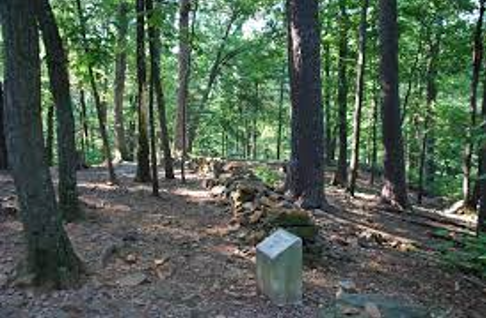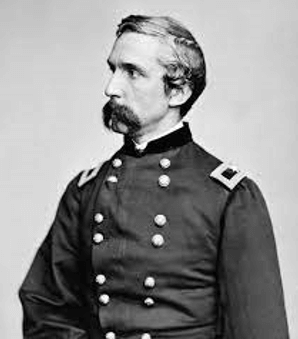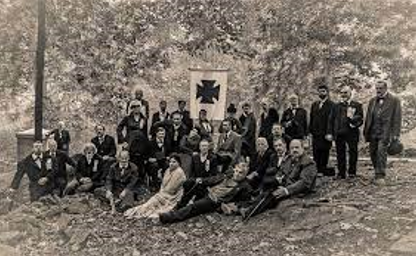As America passes the 160th anniversary of the Battle of Gettysburg, a true story endures of a band of determined soldiers who had a disproportionate influence over the course of the battle.
By July 1863, the Civil War was in its third year. In the eastern theater, Confederate General Robert E. Lee and his Army of Northern Virginia had inflicted two defeats upon the Union Army of the Potomac at Fredericksburg and Chancellorsville. Another major defeat for the Union Army would have greatly weakened Northern morale. Lee and Confederate President Jefferson Davis drafted a letter to seek peace negotiations should the Confederates win another decisive victory. By invading the North and threatening Washington, D.C., Lee sought to shorten the war before the diminishing resources in the South ran out. He hoped the next battle would be the last. This battle was fought in a small town in southern Pennsylvania called Gettysburg.
The Battle of Gettysburg created many heroes over its three days. On July 1, the first day of the battle, a Union cavalry officer named John Buford saw Confederate forces moving toward the small town. Fearing the bulk of Lee’s army was behind them and would occupy the heights around the town, Buford and his men dismounted their horses and engaged the Confederate forces in front of them. What started as small skirmishing continued to grow as more men deployed to the battle. Both armies sent word back to their superiors that a battle was underway. Buford’s actions delayed the Confederate’s advance long enough to keep the high ground surrounding Gettysburg under Union control, which played an important part in the battle as it unfolded.
As the sun rose on the morning of July 2, Lee faced a fortified Union Army that held high ground overlooking Gettysburg. He decided to attack anyway. Union forces were positioned in the shape of a fishhook, with a mountainous area called Culps Hill on the far right of the Union line and another mountainous area called Round Top on the Union left flank. Round Top consisted of two hills, Big Round Top and a smaller 650-foot hill called Little Round Top. While Big Round Top was higher, it was covered with trees and rocks that made placing men and artillery difficult. Little Round Top had far fewer trees and was more accessible. Therefore, control over Little Round Top became the focus of both armies.
Union General George Mead, only a few days into command of the Army of the Potomac, described the significance of holding Little Round Top, saying after the battle, “But for the timely advance of the Fifth Corps and the prompt sending of a portion to Round Top [Little Round Top], where they met the enemy almost on the crest and had a desperate fight to secure the position – I say but for these circumstances the enemy would have secured Round Top, planted his artillery there, commanding the whole battlefield, and what the result would have been I leave you to judge.” Due to the heroic actions of Union soldiers, Mead was only left to speculate.

On the second day of the battle, Lee focused his attack on the Union left flank and Little Round Top. Mead ordered a Union general named Daniel Sickles to defend the heights of Round Top. However, Sickles disobeyed this order and moved his men forward instead, leading to fierce fighting in the fields and rocks below. This action left Little Round Top undefended.
Union General Gouverneur Warren came to assess the defenses on Little Round Top and found the hill undefended. He began to issue orders to place soldiers on the hill immediately. After intercepting a message meant for another officer asking for help on Little Round Top, Colonel Strong Vincent sprang into action. He understood the gravity of the situation and ordered the 1,350 men of his brigade to occupy Little Round Top immediately.
And here we come to the group of men from Maine who saved the day — and maybe the whole battle — at Gettysburg. At the extreme left flank of the Union line of battle, Vincent placed the 358 fighting men of the 20th Maine Regiment. The 20th Maine had seen harrowing action at Fredericksburg but was not considered a particularly effective regiment. That all changed in a few hours. The regiment was led by Colonel Joshua Lawrence Chamberlain, a professor of rhetoric and modern languages at Bowdoin College in Maine. Like most in the Union Army, he had volunteered to fight.
Strong Vincent explained to Chamberlain that his regiment represented the extreme left flank of the Union line of battle and that the position had to be held. Some versions state that Vincent told Chamberlain to hold the ground “at all costs,” while others state that Vincent used the phrase “to the last.” Whatever was said, Chamberlain understood his regiment’s situation.

Shortly after the 20th Maine and three other regiments — the 44th New York, 16th Michigan and 83rd Pennsylvania — were put into position on Little Round Top, intense fighting began. The 644 Confederate soldiers of the 15th Alabama Regiment, under the command of Colonel William Oates, charged up the hill toward the 20th Maine. They retreated, then charged, retreated, then charged again. Chamberlain ordered his line extended as the Confederates tried to outflank the Union soldiers. This left the men of the 20th Maine spread out but prevented them from being overrun and defeated.
The 20th Maine was believed to have discharged 15,000 rounds during the fight for Little Round Top. The problem was that they were running out of ammunition as the Confederates continued to charge up the hill. Chamberlain faced a difficult decision. He understood the potential disaster if the Confederates gained control of this position, so he gave an order that has become the focus of many discussions about Gettysburg ever since. He yelled, “Fix bayonets!” The men of the 20th Maine did just that. When the Confederates came up the hill again, this time, the Union men charged downhill toward them. This surprised the tired Confederate soldiers, and most of them were killed, captured or driven into retreat. The Confederates did not make another charge.
While the 20th Maine was on the extreme left of the Union position, the other three regiments to their right needed to defend Little Round Top to keep it in Union possession. One of these regiments, the 16th Michigan, began to be overrun by Confederate soldiers. Colonel Patrick O’Rorke and his 140th New York Regiment quickly moved forward and closed the gap in the line of battle that was forming. This was another decisive action that saved the Union position on Little Round Top.
While Joshua Chamberlain has become the celebrated face of the 20th Maine, it was the bravery of all these men that held Little Round Top for the Union. Sergeant Andrew Tozier had been part of a group of 120 men from the 2nd Maine, a Union regiment that had been disbanded. Just a week earlier, these men had been attached to the 20th Maine after they refused to fight because of a dispute over service time. Chamberlain convinced most of the men from the old 2nd Maine, including Tozier, to join and fight with the 20th Maine instead of facing court-martials. These extra men proved invaluable on Little Round Top. Andrew Tozier received the Medal of Honor for his actions that day.
While Chamberlain ultimately gave the command to fix bayonets, some contend that it was a company commander named Holman Melcher who first thought of the idea. Another 20th Maine officer who deserves recognition is Captain Ellis Spear. He heroically commanded the far left of the regiment that was under the most pressure from the beginning of the assault.
On July 3, Lee made the most fateful decision of the war. He ordered approximately 12,500 men to cross open ground under Union artillery fire to attack the center of the Union line. “Pickett’s Charge,” as it was called because Confederate General George Pickett led the attack, was considered the “high-water mark” of the Confederacy. The Confederacy would never be as strong as it was before its soldiers were soundly defeated, attacking the center of the Union line at Gettysburg. This was the last major engagement of the battle. The Union was victorious.
Lee and what remained of his army crossed back into Virginia after the battle. The Confederacy was never able to go on the offensive again. On July 4, 1863, another Union army led by Ulysses S. Grant defeated the last remaining Confederate stronghold on the Mississippi River at Vicksburg. The Union obtained complete control over the Mississippi River, cutting the Confederacy in two.
The bloodshed of the Civil War continued into the spring of 1865, and Lee ultimately surrendered his Army of Northern Virginia to Ulysses S. Grant on April 9, 1865. The Union victory at Gettysburg proved pivotal in ending the deadliest war in American history.
Providence placed the 20th Maine at that critical point on the battlefield near Gettysburg that day. Before the war was over, on November 19, 1863, President Abraham Lincoln delivered what many consider to be the finest speech in American history at the dedication of the Gettysburg National Cemetery on the battlefield itself. In total, almost 94,000 Union soldiers participated in the battle, along with a little fewer than 72,000 Confederate soldiers. More than 51,000 soldiers on both sides were killed, wounded, captured or missing, making the three-day Battle of Gettysburg the bloodiest battle of the Civil War. Of this number, a little over 7,000 soldiers on both sides were killed in action. Those killed included Strong Vincent, Patrick O’Rorke and twenty-nine soldiers from the 20th Maine.
Joshua Lawrence Chamberlain received the Medal of Honor for his actions on Little Round Top. He was wounded multiple times throughout the Civil War and went on to become the four-term governor of Maine. His Confederate counterpart on Little Round Top, William Oates, served as the governor of Alabama for one term.
Steve Villalobos is a Southern California professional who holds an undergraduate degree in American History and political science. He is also a contributor and writer for 1776history.com.

